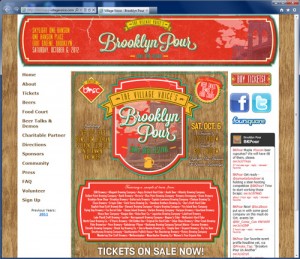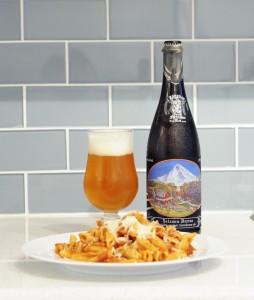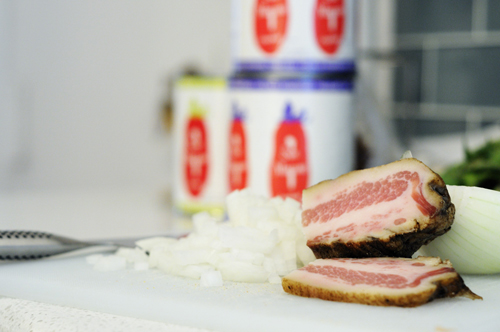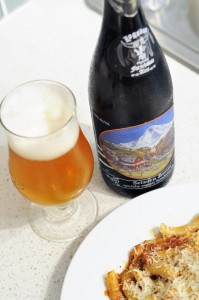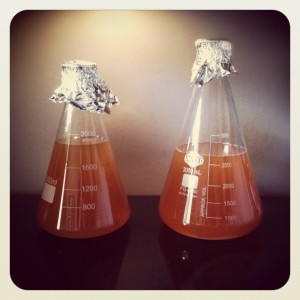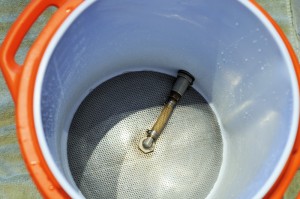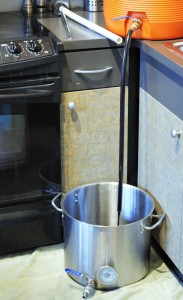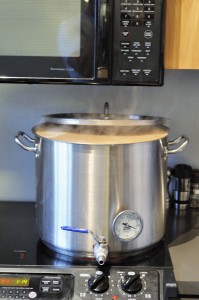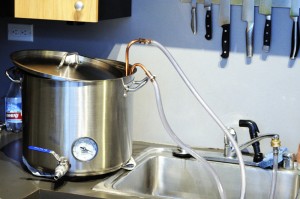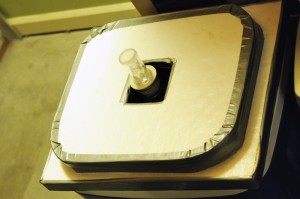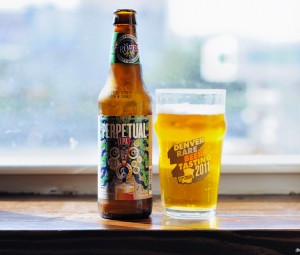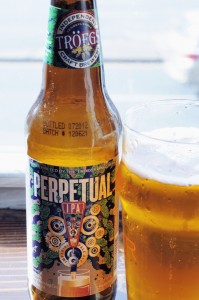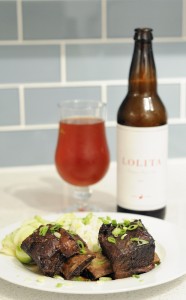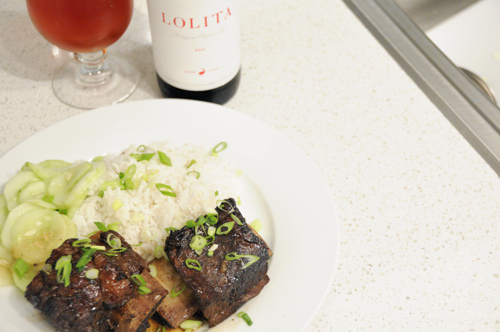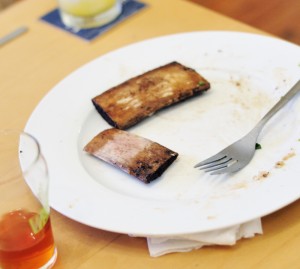Note: Tickets are officially sold out.
A week from today (October 6) I’ll be heading over to the old Williamsburgh Savings Bank Tower building in Fort Greene, Brooklyn to attend the Village Voice’s 2nd Annual Brooklyn Pour. This event boasts 65 different breweries plus food, entertainment, and seminars over the course of two 3-hour sessions (1-4pm, 6-9pm). The general admission cost is $45 and includes unlimited samples (within reason). VIP admission (which includes complimentary food, a gift bag, access to a special mezzanine and special drinks) is also available for $65.
The Beer
Brooklyn Pour’s website boasts an impressive number of breweries. Most of these are within the tri-state area along with a handful of breweries from across the states, as well as a few international breweries. The Village Voice currently does not have a list of the beers being poured. Fortunately, The Pour Report was able to contact some of the attending breweries and get information about what they would be pouring. Please note that this list isn’t 100% inclusive and is subject to change. If you’re a brewer coming to the event and would like your information posted here, please contact me and I’ll add it.
Allagash Brewing, Portland, ME
- White
Our interpretation of a traditional Belgian wheat beer. Brewed with a generous portion of wheat and spiced with coriander and Curacao orange peel, this beer is fruity, refreshing and slightly cloudy in appearance. - Black
Allagash Black is a Belgian style stout brewed with 2 Row barley, torrified wheat, oats, both roasted and chocolate malt and a generous portion of dark caramelized candi sugar. The silky mouth feel is a great balance to the roasted character, coffee and dark chocolate notes expressed throughout this beer. - Curieux
Allagash Curieux was the first foray into barrel aging. Curieux is made by aging our Tripel Ale in Jim Beam bourbon barrels for eight weeks in our cold cellars. The aged beer is then blended back with a portion of fresh Tripel. The resulting beer is soft with coconut and vanilla notes, with hints of bourbon.
Blue Point Brewing Company, Patchogue, NY
- Toasted Lager
Our flagship Toasted Lager still has the same toasted flavor it was named for. Copper in color, our most popular and unique brew is made from six different malts, including English Pale, Crystal, Munich, Carapils, Wheat, and Belgian Caravienna. Toasted Lager’s balanced flavor of malt and hops makes for easy drinking and the special lager yeast we use produces an exceptional, long-lasting smooth finish. - Hoptical Illusion IPA
Our classic, American-style India Pale Ale (IPA) features a rare hop grown exclusively on a small farm in Oregon. One taste and you’ll understand why we bought the entire crop. Our Hoptical Illusion IPA is brewed with a generous amount of this select hop that’s added five different ways for maximum hop flavor. - RastafaRye Ale
A hearty rye malt, blended with fresh West Coast hops resulting in a delicious, deep copper ale with just the right amount of rye flavor to offset the spicy, floral characteristics of the hops. - White IPA
Our White IPA is an unfiltered European-style white ale with a fresh American IPA finish. Brewed with malted and unmalted wheat and just the right amount of west coast hops, it’s fermented with German yeast to give it a perfectly balanced character with less bitterness than traditional IPAs.
Brooklyn Brewery, Brooklyn, NY
- Defender
Limited edition beer brewed for NYC Comic Con. Hoppy Amber IPA.
- Fiat Lux
What are we drinking this summer? Combining Canadian and American malts with a large proportion of un-malted white winter wheat, Fiat Lux starts with a Belgian witbier inspiration. A blend of Pacific Northwest hops, a little lime peel and a dash of Indian coriander brings a bright blast of citrusy aromatic sunshine, while German Perle hops supply a nice big zap of refreshing bitterness.
Captain Lawrence Brewing Company, Pleasantville, NY
- Pumpkin Ale
This is the perfect beer to drink as the weather starts to turn a bit cooler. Brewed with pureed pumpkins added directly to the mash and traditional pumpkin pie spices add to the end of the boil, this beer packs a ton of flavor into a malty and smooth amber-colored ale.
Cisco Brewers, Nantucket, MA
- Whale’s Tale Pale Ale
English style pale ale. Cisco’s flagship beer. Wonderfully balanced with Maris Otter malt, hints of crystal malt and generously hopped with East Kent Goldings, it has a rich honey color and fruity hop aroma. It is named in honor of Nantucket’s whaling history. - Grey Lady Ale
Named for the often foggy island where it is brewed. This wheat beer is fermented with Belgian yeast and brewed with fresh fruit and spices. A unique ale that emits a complex, earthy nose and a soft, mid-palate maltiness with hints of tropical fruit. Dry and spicy.
Doc’s Draft Cider, Warwick, NY
- Apple Cider
This cider is semi-dry and wonderfully effervescent with a remarkably fresh apple nose. Its crisp, fruit forward taste and a clean, refreshing finish, have won our cider countless awards and praise.
- Pumpkin Cider
A seasonal cider made with roasted pumpkins, cinnamon, allspice, fresh ginger and nutmeg.
Dogfish Head, Milton, DE
- Raison D’etre
A deep mahogany, Belgian-style brown ale brewed with beet sugar, raisins and Belgian-style yeast.
Element Brewing Company, Millers Falls, MA
- Extra Special Oak
Pouring the beer in the glass unleashes notes of vanilla bean and spice with an underlying aroma of rich malt. Layers of flavors follow, from toasted coconut to warm bread to green tea. Full body, this beer will pair nicely with mild charcuterie and soft rind cheese. - Red Giant
Lush English hop varieties balanced with luxurious English malts meld together in this deeply flavored ale. At its core it is food-friendly approachable and makes a style all its own. Pairs well with grilled meat and salty cheeses. - Dark Element
Strikingly viscous and creamy on the palate with citrus fruit and chocolate cream, Dark Element offers enormous density yet preserves the balance that is a hallmark of Element Brewing Company. Use this ale to contrast spicy and acidic foods. - Altoberfest
The current seasonal that we will be pouring is “Altoberfest” it is currently ranked 2nd in the world on Beer Advocate for Oktoberfest style. This fall seasonal, blends the assertive hop character of a classic German Alt with the malt qualities of a traditional Oktoberfest. Fermented with our house ale yeast you will find this ale a superior companion to the fall.
KelSo Beer Co, Brooklyn, NY
- Barrel Aged Porter
Malty, chocolatey, with vanilla and rum notes and 6.5% ABV. - Kellerfest
Mellow, light toasted malt, and clean finish at 6% ABV.
Ommegang, Cooperstown, NY
- Witte
Wheat ale with spices, sweet orange peel, and coriander. Traditional Belgian-style wheat ale. Flavorful, soft and hazy. A drink of the sun, Witte was made to refresh and restore. - Hennepin
Ale with spices. Grains of paradise, ginger, coriander and sweet orange peel. Hearty and rustic golden ale, full-bodied, hoppy and crisp. Hennepin was made to quench your thirst for the unknown. - Three Philosophers
98% Ale – 2% Ale with cherries added. Unique blend of Ommegang Quadruple and Liefmans Kriek. Three Philosophers was made for contemplation.
Victory Brewing Company, Downingtown, PA
- Prima Pils
Heaps of hops give this pale lager a bracing, herbal bite over layers of soft and smooth malt flavor. This refreshing combination of tastes makes Prima a classy quencher in the tradition of the great pilsners of Europe. - Headwaters Pale Ale
Our brewery is blessed with exceptionally pure water that travels just over a dozen wooded miles to reach our brewery. With this pristine water we have transformed floral American hops and subtle, crisp German malts into a refreshing delight. - Golden Monkey
Strong and sensual, this golden, Belgian-style ale glows. The richness of German malts and Belgian yeast are tempered by a sparkling approach and overall light body. Abundant herbal, fruity notes make Golden Monkey® one to savor.
Weyerbacher, Easton, PA
- Merry Monks
Belgian-Style Tripel. Pilsner malt combined with an abbey yeast strain yields a remarkable and complex flavor packed with notes of spice, banana and pear. Nicely balanced, with a moderate to dry finish, Merry Monks is bottle conditioned creating a special effervescence and a creamier carbonation.
- Last Chance IPA
A full-flavored (West Coast style) hop assault delightfully lacking in balance. We’ve added a combination of Centennial, Cascade, Simcoe® and Columbus hops to produce aromas of grapefruit, pine and citrus. This beer was first released in June and is now available as a year-round release in 5 markets. A portion of the proceeds from sales of this beer goes to an animal rescue organization.
The Crowd and Venue
With 1,500 people attending per session and no limits on the number of pours, I expect this to be quite an enthusiastic crowd. The 60+ breweries in attendance should help minimize lines with exception of those breweries that manage to generate a buzz (pun intended). Skylight One Hanson is a beautiful venue that promises a great beer festival environment.
Are you planning on attending? What are you most looking forward to? Stay tuned for my post-event wrap-up!

